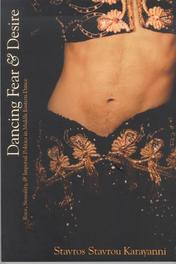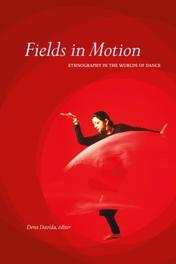Dance


Excerpt from Fields in Motion: Ethnography in the Worlds of Dance, edited by Dena Davida
From Chapter 3: Interview Strategies for Concert Dance World Settings by Jennifer Fisher
If I imagined myself to be an intrepid ethnographer striking out for unknown territory, like a slightly more stylish version of Margaret Mead, it was despite the fact that I was entering a rural Virginia high school auditorium where the local inhabitants put on The Nutcracker every year. It was hardly the stuff of perilous journeys. After all, I had just stopped at a mall for directions and noticed that it was "high cappuccino machine per capita" country, with plenty of amenities and free parking. But part of my image of myself as a postmodern dance ethnographer seemed to involve ironic nostalgia for iconic explorers. "The natives were friendly and their rituals fascinating," I told friends and colleagues later, knowing that it sounded like a joke about the relative comfort of trekking in the wilds of suburban ballet studios, but also that it was an accurate description of my fieldwork experiences. After all, I was encountering people who were native to a particular tradition, even though it wasn't always called a ritual by the tribes that put the ballet on. I knew that The Nutcracker wasn't just an aesthetic event, but like any tradition, reflected both communal and individual beliefs, as well as culturally revealing attitudes. And, of course, "fieldwork at home" was not exactly new, although ballet ethnography is still relatively rare.
These are some of the thoughts I had in 1996, as I began my study of The Nutcracker, the Russian ballet that had evolved into a Christmas tradition in North America. My methods included those of traditional participant observation, but because I was on "home turf," investigating a familiar phenomenon in an unfamiliar way, I developed a particular approach to interviewing, the topic I will focus on here. I was both an "insider" and an "outsider" to the world of the annual Nutcracker, in that I had once danced in the ballet, and I shared the ethnic, economic, and cultural background of most Nutcracker participants, but I was also a "foreigner" in that I had drifted away from the dance world as an adult, and then returned as an academic, armed with the tools of observing and recording what I saw. Indian-born anthropologist Jayati Lal, who wrote about her return from the United States to India to do her fieldwork, recognized this duality when she said that she felt like "a 'native' returning to a foreign country," because she did fieldwork in places she hadn't been before (Lal 1996: 191-92).
I also have something in common with the "halfie" or "hyphenated" ethnographers discussed by anthropologists Kamala Visweswaran and Lila Abu-Lughod, although I am not positioned between two ethnic groups as they are (Visweswaran 1994: 131). What I have in common with hyphenated ethnographers, as well as researchers working in their "own" cultural groups (such as Lal, Kondo, and Limón), is the embodied experience of existing in two different worlds. For me, the two worlds were a ballet dancer's realm and that of the academic observer and analyst. I considered it an advantage to have this double or multiple positioning (ex-dancer, dance scholar advocate, "impartial" critic and ethnographer), because acknowledging different vantage points led me to understand that fieldwork is not "collection of data by a dehumanized machine" (Okley 1992: 3). These different vantage points surely interacted with each other, and if the way I reacted to ballet and The Nutcracker arose from a complex of experiences and attitudes that alternately felt entrenched or shifting, I reasoned that the same thing could be true for my respondents.
Fortunately, the days of believing that only outsiders were clear-headed enough to write ethnographies were over before I entered the field. As James Clifford emphasizes, ethnographers who are closely related to the cultures they investigate are uniquely positioned to do their work, since "it probably requires cultural insiders to recognize adequately the subtle ruses of individuality, where outsiders see only typical behavior" (Clifford 1978: 53). In the case of The Nutcracker, it was even more complicated than that. Many dance insiders often saw the ballet as "typical" or, more to the point, as "stereotypical," even though they might realize that many individual approaches are involved. In the professional dance world, The Nutcracker has often been considered a lightweight phenomenon, suspect because it is widely embraced by non-specialists, families, and children. In the tradition of Western art after the age of modernism, regular repetition of an aesthetic product is often characterized as a static iteration that becomes stale. But an insider to dance studies could easily see that the annual Nutcracker phenomenon is a complex, always changing, powerful ritual of some sort.


